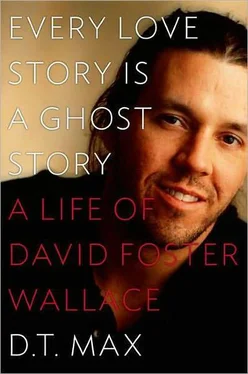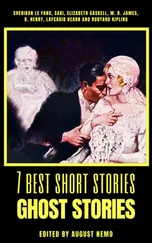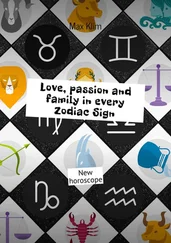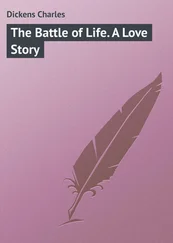Oblivion was a far smoother process. The collection consisted of eight stories, some of which came from the notebooks Wallace was using to write portions of The Pale King and probably began as sections of it. Wallace had downplayed the stories when he had first tentatively suggested a new collection to Pietsch in October 2001, calling them “the best of the stuff I’ve been doing while playing hooky from a certain Larger Thing.” But Pietsch, as ever his ideal reader, responded immediately to the portraits of “unhappy, complicated, intellectualizing men.” In the following two years, while Wallace worked on Everything and More , he also wrote the last story in the collection, “The Suffering Channel,” the story of a man for whom great art comes so easily that he can defecate it, and Pietsch began organizing the pieces for publication. “I don’t feel like much of an editor here,” Pietsch admitted to Wallace in October 2003, “but these stories didn’t strike me as needing many red-penciled queries…. Overwhelmingly, these stories do what they do with irresistible force.” Privately, he marveled at the creative pain and stress evident in his author’s newest effort.
The stories were mostly successors to those of Brief Interviews . They too concerned themselves mostly with middle-aged, middle-class white men in middle America. 6Though the subjects share their antecedents’ condition of total self-absorption, their pride in themselves — whether in their sexual politics or just in their sexuality — has by now been replaced by a sullen silence. These men are aware of themselves as over-the-hill, culturally disempowered, on their way to nowhere, especially vis-à-vis women. It is no accident the first story is called “Mr. Squishy.” Even irony has lost its power to protect them. They seem able to see everything but what’s in front of their eyes and to talk about everything but what actually matters to them.
The stories in Brief Interviews are afraid of expansion, so unattractive or unstable are the interiors of their subjects; the stories in Oblivion seem afraid of compression, as if the title were a threat that could only be defended against by the relentlessly engaged consciousness. Words cover the stories, coating them in thick layers of verbiage, perspectives shift, and there are disorienting chronological jumps. “It’s interesting if you really think about it, how clumsy and laborious it seems to be to convey even the smallest thing,” the narrator of “Good Old Neon” writes. There is only one way to halt the onrush of data, to slow it down so you can find its meaning: “Think for a second what if all the infinitely dense and shifting worlds of stuff inside you every moment of your life turned out now to be somehow fully open and expressible afterward, after what you think of as you has died…?”
“Good Old Neon” is the most uncomfortable of the stories in an uncomfortable volume, a narrative about an advertising executive who deliberately kills himself by crashing his car into a concrete bridge abutment. Neal is a familiar type in the Wallace world, a young man whose personality is built on the need to impress others. And the more he succeeds in impressing them, the more of a fraud he feels. Like Wallace, he feels frozen by the need to control how others see him, “condemned to a whole life of being nothing but a sort of custodian to the statue.” Suicide appears to him the only escape from this recursive nightmare. “Self-loathing isn’t the same thing as being into pain or a lingering death. If I was going to do it, I wanted it instant,” he assures us. Strangely, his is a death testified to by David Wallace, a year behind him at the same Aurora, Illinois, high school, leafing through their yearbook. It is a story where a ghost tells his remembered self about David Wallace’s imagining why the ghost’s remembered self killed himself. 7
“Good Old Neon” is the only story in Oblivion explicitly about a suicide, but many in the collection have a tamped-down sense of doom, of thoughts distorted by words and words constrained by personality and personality deformed by culture.
“The Suffering Channel” is about that culture and the cluster of editors and writers in New York who help create it. Much of the story takes place at Style , a lightweight celebrity magazine whose cheery denizens plan the next issue’s pabulum in offices on the sixteenth floor of 1 World Trade Center. “The Suffering Channel” can be read as a prequel to “The View from Mrs. Thompson’s”; it re-creates the heyday of irony less than three months before the fatal attacks. But it is also a story about personal shame and the confused sources of an artist’s art. In the tale, the celebrated defecator, whom we first think so gifted he can just shit a classic, turns out to be beset by self-hatred. To go to the bathroom is to remember the childhood abuse and humiliation that led to his creativity. He is asked to give a performance on the Suffering Channel, a new station devoted entirely to “real life still and moving images of most intense available moments of human anguish.” Yet at story’s end it turns out to be impossible to broadcast his agony; his shame and his art both are to remain private:
There’s also some eleventh hour complication involving the ground level camera and the problem of keeping the commode’s special monitor out of its upward shot, since video capture of a camera’s own monitor causes what is known in the industry as feedback glare — the artist in this case would see, not his own emergent Victory , but a searing and amorphous light.
Oblivion , published in June 2004, met with what was by now a familiar duality. Wallace had a public that awaited his books — he filled bookstores, and an event at the Public Theatre in Manhattan where he was interviewed by George Saunders sold out. The book sold well — in all eighteen thousand hardcover copies in its first year — and was on several bestseller lists. Wallace found the author tour painless, he preferred having company onstage. The collection got the customary respectful reviews accorded an important writer in the daily press, but there was also an undercurrent of irritation, even anger, on the part of critics — Wallace was denying them the full enjoyment of his great talents. Why, for instance, did all the protagonists sound the same? Where had the Dickensian scope of Infinite Jest gone? What had happened to its comic genius? Reviewers remembered that Wallace had promised readers something different: a single-entendre writing that felt redemptive. That hardly seemed the achievement, let alone the aim, of Oblivion . Michiko Kakutani in the New York Times again brought up this gap, criticizing the collection for offering “only the tiniest tasting of [Wallace’s] smorgasbord of talents. Instead, he all too often settles for…[the] cheap brand of irony and ridicule that he once denounced.”
More sympathetic critics acknowledged that there was something interesting about using deadened language to convey deadened states, that the ironization of irony had merits, but they too wondered whether what Wallace was writing was of more than academic interest. “Another Pioneer,” contained the words “evection,” “canescent,” “protasis,” “epitatic,” “hemean,” “nigrescently,” “ptotic,” “intaglial,” “catastasis,” and “extrorse,” not to mention “thanatophilic” and “omphalic.” It had a single paragraph twenty-three pages long. The same thing might be said about the stories as is said in Infinite Jest about Jim Incandenza’s disdained experimental cartridges, that there was “no sort of engaging plot, no movement that sucked you in and drew you along.” Or maybe that they were less stories than forms for stories, much as one character in “The Suffering Channel” is described as “not a body that occupied space but rather just a bodyshaped area of space itself.”
Читать дальше












